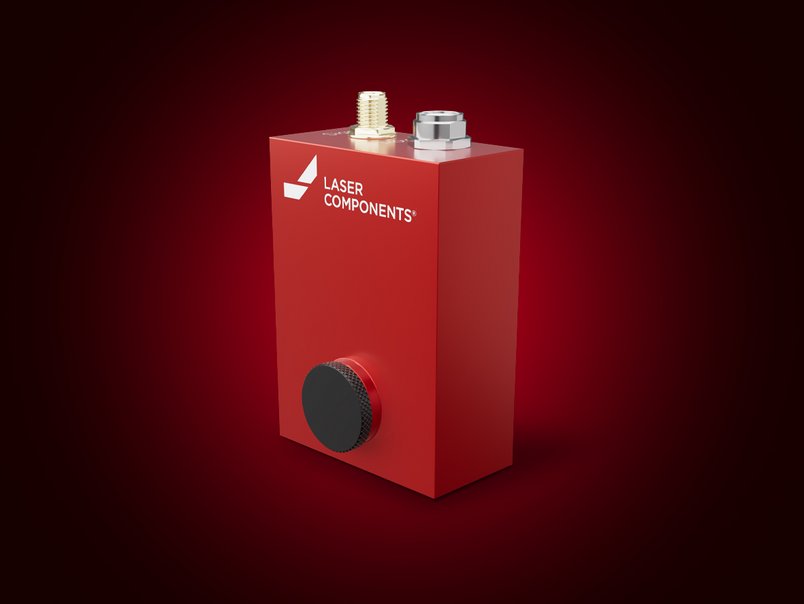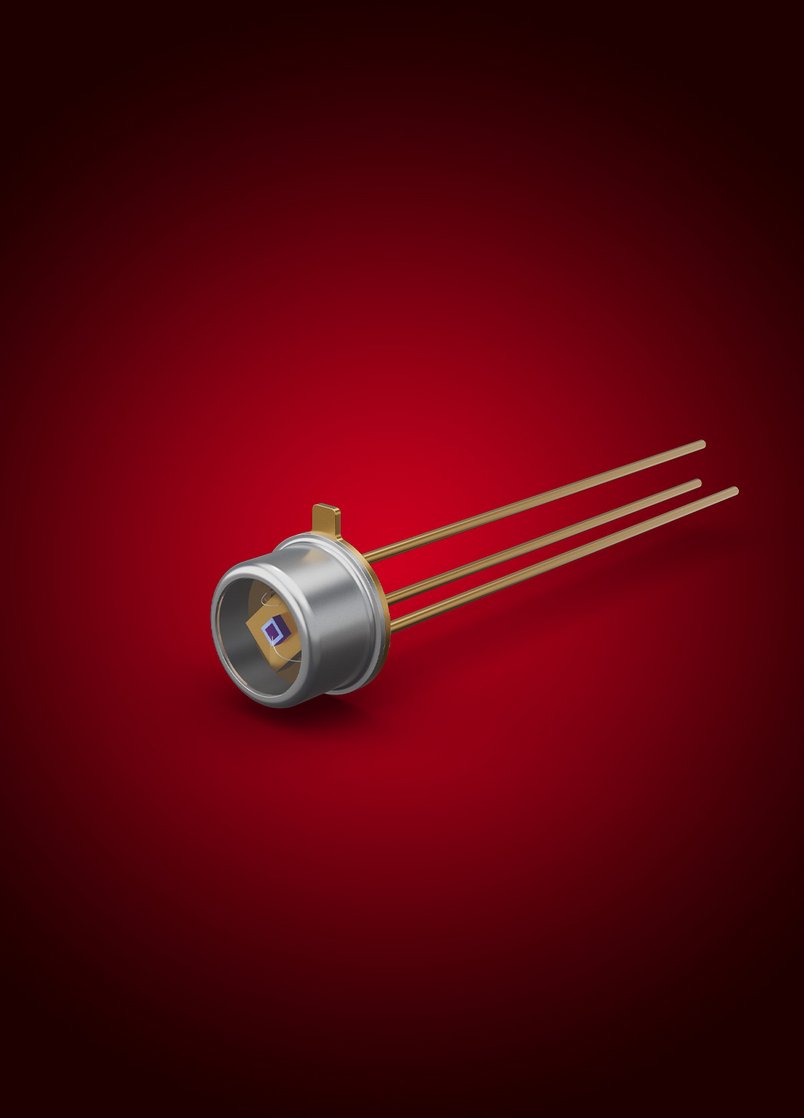Explore the PR Series: A New Class of Ultra-Broadband Receivers
The PR Series of high-speed pyroelectric receivers combines ion beam milled detector technology with high-end electronics, offering a versatile solution for precise measurements across a wide range of applications. The series features three exceptional components, the PR No1, PR No2 and PR No3, designed to meet diverse needs in scientific and industrial settings, both which have an Infrared (IR) version and a Terahertz (THz) version.
The PR Series is a new class of IR and THz receivers that have little in common with traditional pyroelectric detectors. The PR Series bridges the gap to Peltier-cooled photonic detectors without spectral limitations at long and short wavelength cutoffs.
Find the PR Series receiver that meets your needs with options including a 3 dB cut-off frequency: 8 kHz, 35 kHz, and 50 kHz.
Open product details PR No1 Open product details PR No2 Open poduct details PR No3
The main differentiators with the PR Series are:
- High Speed
- Low signal distortion
- Excellent linearity
- Uniform active area of 2x2 mm
- Low temperature coefficient
- Consistent and scalable manufacturing
- Intuitive functionality
- No cooling
- Facilitates AI-based categorization of measurement data
Series
PR Series - IR THz Receivers
PR Series - IR THz Receivers - PR No1
The Universal Workhorse in Low Flux Conditions
The PR No1 is the tool for precise measurements - especially in the long-wave infrared (LWIR) and THz range where conventional semiconductor detectors with thermo-electric cooling reach their limits. The PR No1 is also useful for mid-wave infrared (MIR) because of its built-in extension towards near infrared (NIR). Its 3 dB bandwidth is 8 kHz and its linearity over 4 decades is better than 1%. You can make corrections to your own measurement data using the included individual measurement protocol.
Pyroelectric detectors are inherently spectrally flat and thus detect wavelengths in MIR and NIR, visible light, and even shorter wavelengths.
The PR No1 is a key component towards a "democratic" Fourier Transform Infrared (FTIR) spectroscopy and for Quantum Cascade (QC) laser-based application development above 10 µm.
Contact
Features
- Optimized for IR: Ideal for LWIR and THz measurements.
- Versatile Detection Capabilities: Measure wavelengths within a wide range.
- Exceptional Bandwidth and Linearity: Features an 8 kHz (3 dB) bandwidth.
- Individual Measurement Protocol: Responsivity and noise frequency charts to aid in accuracy of measurement data.
The PR No2 takes the simple design of the PR series with a single power input, and single signal output, to provide an all-around tool for environments with a high degree of light output.
As with the PR No1, the similar design of the PR No2, offers LWIR and THz detection capabilities across the IR and THz versions. The PR No2 IR version has a minimum 35 kHz, typical 50 kHz (3 dB) bandwidth with a flat frequency characteristic that is even wider than the bandwidth used in most FTIRs.
The PR No2 has 10 times lower responsivity compared to the PR No1, resulting in a component that is less prone to oversaturation. It is ideal for scenarios where low-noise detection alongside a high photon flux is critical for success. This includes FTIR-related applications, including use cases where LASER COMPONENTS has proven track record, such as pulse power detection of supercontinuum lasers.
Contact
Key Features:
- Ultra-Broad Spectral Range: Capable of measuring wavelengths from ultraviolet (UV) to THz, covering a broad spectrum of light.
- Enhanced Bandwidth: Offers a (3 dB) bandwidth of at least 35 kHz, up to 50 kHz.
- Optimized for Environments with Saturated Light: Designed for high-output IR sources with a reduced risk of oversaturation.
- Superior Signal Quality: Optimized signal-to-noise ratio (SNR).
Datasheets
PR Series - IR THz Receivers - PR No3
Position-sensitive 4-quadrant IR Beam Detection
It can be a significant challenge to get accurate and fast beam positioning in the laboratory for infrared (IR) and terahertz (THz) signals. The PR No3 from LASER COMPONENTS is a high-performance uncooled pyroelectric receiver designed for position-sensitive laser beam detection from the ultraviolet (UV) to the far-infrared (FIR). The 4-quadrant design offers a compact housing for a round 2.0 mm active area, that is separated into four segments, each with a vertical and horizontal side length measuring 980 µm × 980 µm. Each PR No3 is individually calibrated for responsivity and noise over frequency, making it ideal for real-time beam displacement measurements.
The PR No3 delivers excellent channel-to-channel uniformity, even in noisy laboratories with a bandwidth up to 50 kHz. Quickly plug in the power and output connections to get easy and valuable data for applications that include beam positioning, experiments with long beam paths / calculating fast pulse-to-pulse fluctuations, and hysteresis correction in scanning systems. The detector’s x- and y- axes are precisely aligned to the housing, with a typical accuracy within 1°.
Along with the standard PR No3 IR version, an optional PR No3 THz version also available, offering enhanced responsivity for THz lasers with extended detection down to 40 GHz.
Why Choose the PR Series?
Beyond Borders
The PR Series offer the reliability and precision needed for advanced measurement tasks. With their spectrally flat detection capabilities, these receivers are versatile tools that can adapt to various wavelengths and conditions, providing exceptional performance for:
- Research and development
- Dedicated instruments at low volume
- Quality control processes
- Laser and FTIR applications
Explore the PR Series and elevate your measurement capabilities with cutting-edge technology designed to meet the most demanding requirements.

FAQs
What you should know about our PR No1
What wavelength range can be measured?
The KBr window for the IR version opens at about 200 nm and goes to about 30 µm, while the HDPE window for the THz version goes well beyond 60 µm.
What is the output signal of the receiver?
The output signal is an analog Voltage signal in the range of -8 V to +8 V
What is the detection speed?
The 3dB cut off frequency is 8 kHz. Measurements are possible from 1 Hz to even 100 kHz, but the detector is made for frequencies around 1-2 kHz, where there is no need for overly complex interpretation of the output signal.
What is the advantage of the receiver compared to the LTO detector itself?
The receiver makes it significantly easier to get useful signals from your sources. Not only massively speed up the detector, it also does this with very low noise and you also do not need to take care of any offsets, as the output signal base line is 0 V. Furthermore, and quite obviously, there is no need of soldering any detectors to an own driver electronics.
What are the main use cases for the receiver?
Typical use cases are THz detection or spectroscopic applications in FTIR instruments. But we also see more exotic use cases like laser power measurements, where it is nice to have a pyro electric element for detection that integrates the measured power even for very fast lasers without complex effects that quantum devices usually create.
How good is the linearity of the receiver?
We have measured a deviation of linearity of < 1% over four decades of input power.
How does the receiver compare against MCT detectors?
MCT detectors are much faster, that is clear. The receiver however goes well beyond 12 µm, opening completely new fields of applications. It operates at more than 50°C ambient temperatures, which is very difficult with MCT detectors. Although the operating temperatures of MCT detectors often is marked as +70°C, but the important information what happens to the shunt resistance at such temperatures is missing. The PR N°1 still works at these temperatures like at any other room temperature. Another advantage is the linearity over four decades. MCT detectors typically are linear only over 2 decades.
Does the receiver need to be cooled?
No, it is a completely uncooled device.
Fields of Application
for Pyroelectric Receivers




What is Your Challenge?
Beyond Borders


LASER COMPONENTS USA Inc.
Related Products
Beyond Borders


Advanced single channel voltage mode detectors for FTIR instruments.


Pyroelectric crystals generate positive and negative charge carriers simultaneously on opposing sides.


An IR filter makes all the difference. Thermal detectors are naturally polychromatic, and a filter is needed to detect specific gases/wavelengths.
News & Events
from the infrared world
Downloads
Beyond Borders
LASER COMPONENTS USA - Your competent partner for optical and optoelectronic components in the United States.
Welcome to LASER COMPONENTS USA, Inc., your expert for photonics components. Each product in our wide range of detectors, laser diodes, laser modules, optics, and more is worth every Dollar ($/USD). Our customized solutions cover all conceivable areas of application: from sensor technology to medical technology. You can reach us here:
116 South River Road
Building C
Bedford, NH 03110
USA
Phone: +1 603 821 7040
Email: info(at)
















